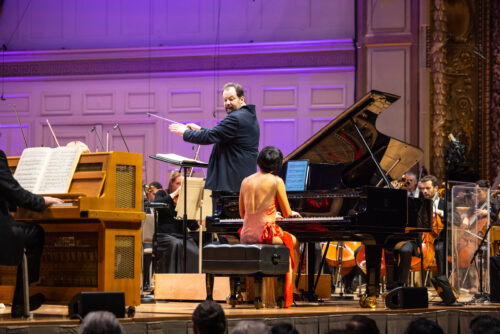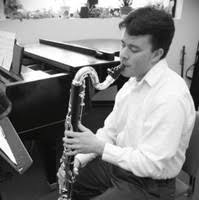“Overflowing and Unlimited . . .” – Nelsons and the BSO release live recording of the Turangalîla-Symphonie
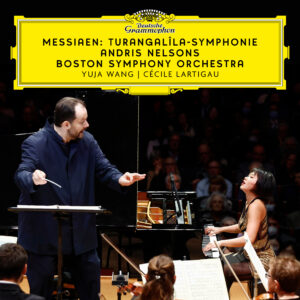 I will admit that I have a rather large soft spot for the music of Olivier Messiaen. Experiments with total serialism, Medieval and Hindustani rhythmic influences, incorporation of bird song (if somewhat freely adapted), modes of limited transposition, nods to Japanese Gagaku and Balinese gamelan, all imbued with a religious mysticism through the lens of synesthesia and a truly original approach to orchestration – what’s not to love? So, when I discovered that the Boston Symphony Orchestra and Deutsche Grammophon would be releasing a live concert recording of Messiaen’s Turangalîla-Symphonie to coincide with the 75th anniversary of the work’s word premiere, my inner music nerd was thrilled that the work was being recognized in this way.
I will admit that I have a rather large soft spot for the music of Olivier Messiaen. Experiments with total serialism, Medieval and Hindustani rhythmic influences, incorporation of bird song (if somewhat freely adapted), modes of limited transposition, nods to Japanese Gagaku and Balinese gamelan, all imbued with a religious mysticism through the lens of synesthesia and a truly original approach to orchestration – what’s not to love? So, when I discovered that the Boston Symphony Orchestra and Deutsche Grammophon would be releasing a live concert recording of Messiaen’s Turangalîla-Symphonie to coincide with the 75th anniversary of the work’s word premiere, my inner music nerd was thrilled that the work was being recognized in this way.
Messiaen never really does anything halfway, and the Turangalîla-Symphonie as a “hymn to joy” is no exception. Serge Koussevitzy and the Boston Symphony placed no limitations when commissioning the work in 1946, but one doubts that a ten movement work for large orchestra, featuring extensive percussion colors, the electronic ondes Martenot, and a virtuoso piano part was what they anticipated. Perhaps due to these features and not in spite of them, Turangalîla-Symphonie has become one of Messiaen’s most iconic works. With pianist Yuja Wang and Cécile Lartigau’s ondes Martenot, the BSO revisited this commissioned work last April and have released the live recording created from these concerts.
Andris Nelsons and the BSO hold nothing back in this often muscular interpretation. After all, Messiaen can be direct at times, and often lets his stronger structures bluntly speak for themselves. Nelsons certainly didn’t shy away from Messiaen’s extremes – allowing the dense and powerful gestures to come to the fore, at times with a surgical clarity and transparency. Though perhaps due to the limitations of dynamic nuance available on recordings, the contrast between the sweeping full ensemble statements and the intimate but lush responses was not as effective as I have experienced in live performances of the work. The statue theme, love theme, and glissandi in the ondes Martenot were often allowed to grow to their fullest expression – likely very effective in a live performance within a large concert hall where the sound has room to dissipate, but at points on the recording they could be so omnipresent that they were more reminiscent of a Tex Avery production than Messiaen’s orchestral expression of all encompassing love.
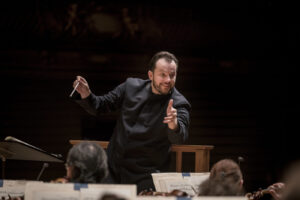
As this was a recording of a live concert performed for an audience rather than a production solely for studio microphones, some balance issues or imprecision might be expected. And though there were a few balance issues and sometimes a lack of dynamic contrast (again expected in recorded formats), the musicians of the BSO are polished and flawless in their execution. Issues with balance and dynamic range tend to work against any composition, but for a composer who communicates so effectively via coloristic contrast and textural variation, it can be difficult for the dynamic range of a recording to fully convey these exchanges with the nuance that makes this work so iconic.
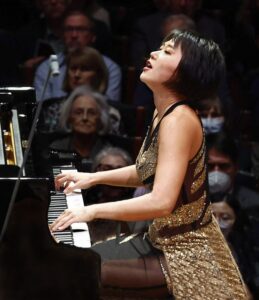
However, no lack of dynamic subtlety stood in the way of Nelsons’s willingness to embrace the extremes of Messiaen’s tutti writing – offering listeners the opportunity to lose themselves within the meticulous complexity of Turangalîla’s most robust moments. Of particular note, the frenetic energy and multiple layers of the fifth and tenth movements were delivered with impressive machine-like precision. Spurred by Nelsons’s bright tempo, the orchestra shimmered through the density of Messiaen’s climactic final movement with a spirit of excitement that must have been thrilling live and is certainly captured on the recording. Still, the timbral juxtapositions enjoyed in live performance can be a little flat in the recorded format (especially in busier textures), amounting to a kind of constant sensory overload of discrete statements rather than a complementary cascade of orchestral colors. Of course, in these larger contexts, being overwhelmed by Messiaen’s orchestration is kind of the point – but one wishes to be forcefully transported by the majesty of a cohesive if multi-faceted whole rather than dazzled piecemeal by the sum of its parts. Perhaps in these instances the limitations of the live recorded format cannot fully translate Nelsons’s interpretation.
Though the shared intimacy of live acoustic performance is difficult to duplicate, the recording is not without its sublime moments. The crystalline delicacy of the sixth movement Jardin du sommeil d’amour (Garden of love’s sleep), is an exercise in the power of understatement. Cécile Lartigau’s ondes Martenot blends perfectly with the muted string theme, providing a languid environment for the delicate interplay of flute, clarinet, piano, and percussion. Likewise, the solo piano work and delicate woodwinds preceding the statue theme at the conclusion of Chant d’amour 2, and the coloristic exchanges in the softer sections of the third movement, Turangalîla 1., were masterfully executed.
Yuja Wang’s performance throughout displays a strong understanding of the piano’s role within the context of the work – adding the important soloistic interjections when needed without overshadowing the ensemble. The solo piano part isn’t quite a concerto (even though the demands of the part may suggest otherwise), and this important color is required to both blend and stand out as a soloist. In the work’s more soloistic passages, Yuja Wang did not disappoint. Her playing is assured and agile, dancing through Messiaen’s angular material with grace and ease.
As a representation of the BSO’s live performance, the recording is a testament to an energetic interpretation with no lack of enthusiasm for Messiaen’s embrace of excess. Studio recordings such as Esa-Pekka Salonen’s 1986 release with the Philharmonia Orchestra or the initial recording by Seiji Ozawa and the Toronto Symphony released in 1968 may offer more nuanced readings of the work. Even so, the BSO’s committed and passionate offering catalogs a live performance that lives up to Messiaen’s own description of the work in the liner notes of the (definitive according to Messiaen) 1990 Myung-Whun Chung recording with the Orchestre de l’Opera Bastille as “a joy that is superhuman, overflowing, blinding, unlimited.”
Though the recording may feel heavy at times, the clarity of the musicianship is evident throughout. Nelsons’s performance is aggressive and leans into the extreme aspects of the work, as one might expect with such epic music. I’m thankful that the BSO chose to highlight and record such an important work. The live recording captures the exuberance and directness of the BSO’s performance and should inspire listeners to seek out more opportunities to engage with live performances of contemporary masterpieces.
